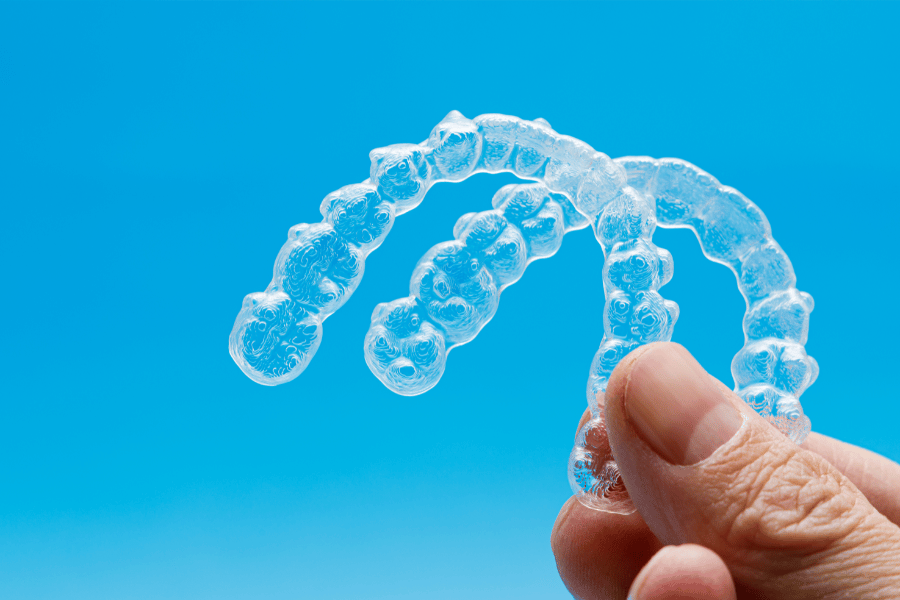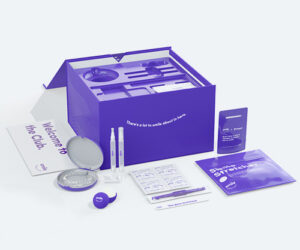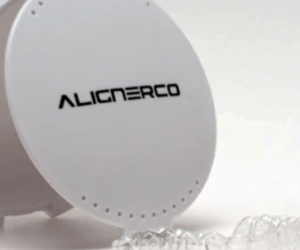Investing in a beautiful smile is now easier than ever in Toronto, with Invisalign offering a sleek, nearly invisible way to straighten your teeth. With the average cost of Invisalign treatment in Toronto ranging from $3,000 to $8,000, it’s crucial to understand what’s included in this price and what alternatives exist.
What is Invisalign?
Invisalign is a brand of clear aligners used to straighten teeth, improve your smile and overall oral health. These aligners are virtually invisible, easily removable, and customized to fit snugly over your teeth.
How Invisalign Straightens Teeth
Unlike traditional braces, Invisalign uses a series of clear, plastic aligners to slowly shift your teeth into the desired position. Every two weeks, you replace your current aligner with the next one in the series, each designed to move specific teeth.
Process of Getting Invisalign
The process begins with a consultation with an Invisalign provider who will create a customized treatment plan. Then, a series of bespoke aligners are created for you. You’ll wear each set of aligners for about two weeks before switching to the next set.
Pros & Cons of Invisalign
Invisalign offers many advantages like being nearly invisible, removable for eating and drinking, and generally less discomfort than traditional braces. However, it requires discipline as they should be worn 20-22 hours a day, and it may not be suitable for more complex orthodontic cases.
Cost Range of Invisalign in Toronto
In Toronto, the Invisalign cost can vary greatly based on the complexity of the case, the duration of the treatment, and the specific provider. Generally, the cost ranges between $3,000 to $8,000.
Invisalign: A Solution for Diverse Dental Issues
Overbite and Underbite
Invisalign can effectively treat both overbites and underbites, conditions where the upper and lower teeth overlap to an excessive degree in either direction.
Crossbite
Crossbite, where upper and lower teeth are misaligned sideways, is another issue Invisalign can correct. This condition can lead to tooth wear, gum disease, and bone loss.
Gap Teeth
Gaps between teeth, which can occur anywhere in the mouth, can be minimized using Invisalign. This orthodontic treatment can help to close these spaces, improving the appearance of your smile.
Crowded Teeth
In situations where there isn’t enough room in the jaw for all of the teeth to fit normally, teeth crowding occurs. Invisalign is an effective solution to this issue, gradually aligning the teeth over time.
Open Bite
An open bite, where the upper and lower teeth do not meet when the mouth is closed, can also be treated with Invisalign. This corrects the bite and improves chewing and speech.
| Invisalign | Traditional braces | |
|---|---|---|
| Mode of Operation | Staged progression | Constant, fixed appliance |
| Structure | Individually tailored aligners | Combination of wires and brackets |
| Material Used | Clear thermoplastic | Predominantly metal, sometimes ceramic |
| Aesthetics | Practically unseen | Evidently visible |
| Detachability | Yes | No |
Traditional braces and Invisalign operate on quite different principles. With traditional braces, a network of wires and brackets are used. The tension in the wires exerts a force on the teeth, prompting them to move in a predefined direction. The same appliance remains in place for the full duration of the treatment.
In contrast, Invisalign utilizes a sequence of unique, custom-made aligners which are worn in a specific order. This approach doesn’t rely on manual tensioning, but rather uses the naturally occurring forces within the mouth to encourage tooth movement.
The Invisalign process is as follows:
1. Custom Aligner Fabrication: Each aligner in the series is specifically designed to perform a specific part of the overall alignment correction. This makes use of the principles of tension and compression. When a new aligner is first put in, it feels unusually tight because it is shaped to guide the next step of the movement, not to match the current tooth positions.
2. Periodontal Ligament Movement: Over the first few days, the shape of the aligner exerts a gentle force on the periodontal ligament (the fibrous tissue that holds the tooth to the jawbone), causing it to move. This movement triggers a response at the cellular level in the bone.
3. Bone Remodeling: As it takes up to two weeks for enough bone to be remodeled and secure the tooth in its new position, each aligner is typically worn for this length of time.
4. Progression to Next Aligner: After the two-week period, the worn aligner is discarded, and the next one is used, starting the process anew.
Upon reaching the end of the aligner series, the patient can expect to see a straighter, healthier smile. It’s important to note that the best treatment option will always depend on the individual case, so a consultation with a dental professional is advised.
Invisalign Accessibility in Toronto - A Comprehensive Guide
Invisalign has revolutionized the orthodontic world with its clear, removable aligners, offering a discreet and comfortable alternative to traditional metal braces. For those living in Toronto, you’ll be pleased to know that Invisalign is widely available throughout the city, thanks to the numerous certified Invisalign providers spread across its diverse neighborhoods. Here’s a broad overview of Invisalign availability in Toronto:
Invisalign Providers in Toronto
Invisalign services in Toronto are offered by many dental clinics and orthodontic practices. These range from downtown clinics to practices in suburban areas, making it easy for residents across the city to access this innovative orthodontic treatment. These providers have undergone specialized training to be certified to provide Invisalign treatment.
Invisalign Treatment Process in Toronto
The Invisalign treatment process in Toronto is the same as anywhere else. It begins with a consultation where your dental professional assesses your teeth and discusses your smile goals. If Invisalign is deemed suitable, a custom treatment plan is created. Using 3D imaging technology, a series of clear, plastic aligners are then custom-made to fit your teeth.
Cost of Invisalign in Toronto
| Area | Cost in Toronto | National Average (Canada) |
|---|---|---|
| Urban | $4,500–$8,000 | $5,000 |
| Suburban | $4,500–$8,500 | $5,250 |
| Rural | $3,500–$7,500 | $4,750 |
Another aspect to keep in mind when considering the overall cost is the tax implication. In Ontario, the Harmonized Sales Tax (HST) is 13%, a combination of the federal goods and services tax (GST) and the provincial sales tax (PST). This tax rate will be added to the total cost of your Invisalign treatment, so it’s important to factor this into your budgeting.
Consultation and Follow-Up
Most Invisalign providers in Toronto offer free initial consultations, providing potential patients with the opportunity to find out more about the treatment and whether it’s a suitable choice for them. Throughout the treatment process, regular follow-up appointments ensure your teeth are moving as planned.
Reasons for Higher Invisalign Costs in Toronto
Invisalign treatment in Toronto might come at a higher cost due to a combination of several factors.
Firstly, the complexity of a patient’s dental issues can greatly influence the cost. In cases where orthodontic issues are more complicated, a larger number of aligners and a longer duration of treatment are necessary, which in turn drives up the costs.
Secondly, overhead costs in a major city like Toronto can also be a contributing factor. Running a dental practice in such a city can come with high commercial rents and operational costs, which can be reflected in the price of treatments offered.
The level of expertise and experience of the Invisalign provider is another contributing factor to the overall cost. Providers who are highly experienced or specialized in their field may charge more for their services.
The geographical location itself plays a significant role as well. Toronto, having a higher cost of living and average income levels compared to many other cities, can influence the pricing of various services, including dental and orthodontic treatments like Invisalign.
Managing Treatment Costs in Toronto
In Toronto, managing the costs associated with Invisalign treatment is an essential consideration for many patients. There are multiple avenues available to help manage these expenses effectively:
1. Dental Insurance:
In Canada, numerous dental insurance plans provide coverage for orthodontic treatments, including Invisalign. Make sure to discuss your plan’s specifics with your insurance provider to understand the extent of your coverage.
2. Health Spending Accounts (HSA):
For those with a Health Spending Account (HSA), these funds can typically be used to pay for Invisalign treatment. Confirm with your HSA provider for exact details.
3. Payment Plans:
Many dental offices in Toronto offer payment plans for their patients. These can help spread the cost of treatment over a longer period, making it more manageable.
4. Financing Companies:
Several companies specialize in financing medical and dental procedures. These companies provide loans specifically designed for healthcare expenses, often with competitive interest rates.
5. Dental Schools:
Some dental schools offer orthodontic treatments, including Invisalign, at reduced rates. The work is conducted by students under the supervision of experienced professors, providing an affordable, albeit less conventional, option for treatment.
6. Comparative Shopping:
Since there are many providers of Invisalign treatment in Toronto, it’s worth taking the time to compare prices. Some offices may offer competitive pricing or special promotions.
Invisalign vs other Orthodontic Braces: Types and Average Costs in Toronto
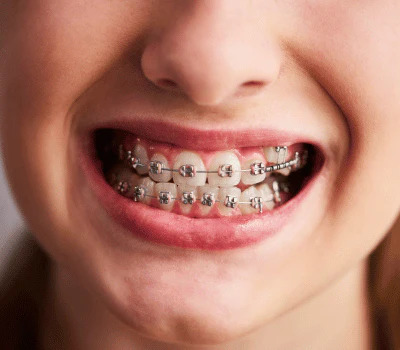
Ceramic Braces
Ceramic braces, made of clear or tooth-colored ceramic material, offer a more aesthetic alternative to traditional metal braces.
| Advantages | Disadvantages |
|---|---|
| Blends well with natural tooth color, providing a discrete option for teeth alignment | Higher cost compared to other types of braces |
| Durable and effective, delivering similar results as metal braces | Elastic ties used with ceramic braces may become stained over time |
| Generally cause less discomfort and irritation than metal braces | Ceramic material is prone to chipping or cracking, requiring careful handling |
Average cost of Ceramic Braces in Toronto: The average cost of ceramic braces in Toronto ranges between $5,000 and $8,000.
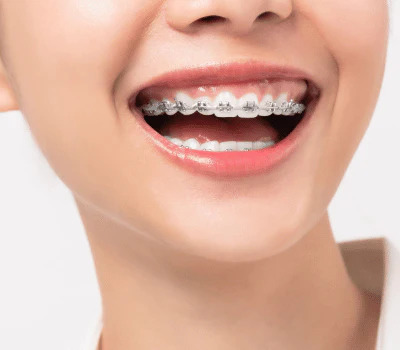
Metal Braces
Metal braces, the most commonly used orthodontic appliances, consist of metal brackets and wires for effective teeth alignment.
| Advantages | Disadvantages |
|---|---|
| Cost-effective option for teeth straightening | More noticeable than other types of braces |
| Durable and effective, suitable for complex cases | Potential for discomfort, especially in the first few days of application |
| Have been used for a long time, proven to deliver reliable results | Require proper oral hygiene to prevent plaque buildup and staining |
Average cost of Metal Braces in Toronto: The average cost of metal braces in Toronto ranges from $3,000 to $7,000.

Lingual Braces
Lingual braces, placed on the backside of the teeth, are virtually invisible from the front.
| Advantages | Disadvantages |
|---|---|
| Virtually invisible, providing an aesthetic solution for teeth alignment | Higher cost compared to other braces |
| Effective treatment with results similar to traditional braces | Potential discomfort and tongue irritation due to brace placement |
| Minimal impact on speech after an initial adjustment period | May require a longer adjustment period due to unique placement |
Average cost of Lingual Braces in Toronto: The average cost of lingual braces in Toronto ranges from $8,000 to $12,000.

Clear Braces (Invisible Braces)
Clear braces, also known as invisible braces, are transparent aligners that gradually straighten teeth.
| Advantages | Disadvantages |
|---|---|
| Almost invisible, offering a discreet method of teeth straightening | Require discipline to wear consistently due to the removable nature |
| No dietary restrictions, as they can be removed for eating and drinking | May require longer treatment time than traditional braces |
| Easier maintenance and cleaning, reducing risks of dental issues | Higher cost than traditional braces, though comparable to other aesthetic options |
Average cost of Clear Braces in Toronto: The average cost of clear braces in Toronto ranges from $4,000 to $8,000.
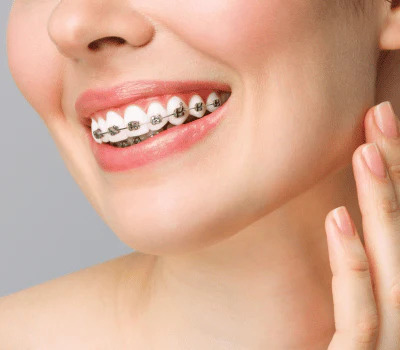
Wire Braces
Wire braces, also known as self-ligating braces, use a sliding mechanism to adjust the wire tension.
| Advantages | Disadvantages |
|---|---|
| Efficient tooth movement, resulting in quicker treatment times | Higher cost compared to traditional braces |
| Less friction, reduced discomfort compared to traditional braces | Longer adjustment period due to the unique mechanism |
| Fewer dental visits required due to self-adjusting mechanism | May require more oral hygiene maintenance to keep clean |
Average cost of Wire Braces in Toronto: The average cost of wire braces in Toronto ranges from $4,500 to $7,500.
Braces Price Comparison in Canada: Which Type Offers the Best Value?
| Braces Type | Average Cost in Toronto |
|---|---|
| Invisalign | $4500 – $8000 |
| Ceramic Braces | $5000 – $8000 |
| Metal Braces | $3000 – $7000 |
| Lingual Braces | $8000 – $10000 |
| Clear (Invisible) Braces | $4000 – $8000 |
Affordable Invisalign Alternatives in Toronto
For those seeking a more budget-friendly alternative, options like Byte, Candid, and AlignerCo offer at-home teeth straightening solutions at a fraction of the Invisalign cost, making them a popular choice for those on a budget.
Choosing to straighten your teeth is a significant decision that affects not only your appearance but also your lifestyle. As this guide shows, Invisalign and its alternatives offer several options to fit your budget and lifestyle. Your journey towards a perfect smile in Toronto could be just a consultation away!
SmileDirectClub
Cost: $2,500 CAD
VISIT WEBSITE
SmileDirectClub, one of the pioneers in home-based aligner services, offers a full set of aligners delivered to your door. With costs significantly lower than Invisalign, it provides a compelling alternative.
While SmileDirectClub may not be equipped to handle all the conditions Invisalign can, it is highly effective for mild to moderate cases. The treatment duration with SmileDirectClub typically ranges from 4-6 months. Their almost invisible aligners are complemented by their SmileSpa device, a cleaning system designed to keep your aligners fresh and clean. They also offer a unique "Club Warranty," promising to provide additional aligners should your teeth shift after treatment.
AlignerCo
Cost: $1,545 CAD VISIT WEBSITE
AlignerCo is another home-based aligner company that prides itself on providing the most affordable teeth-straightening solutions on the market.
Like SmileDirectClub, AlignerCo sends a complete set of custom-made aligners to your home, and your progress is tracked remotely, reducing the need for office visits. They are effective in treating mild to moderate teeth misalignment.
AlignerCo's standout feature is their focus on affordability without compromising on quality, making them a great choice for those on a strict budget. Plus, they offer flexible payment plans to further ease the financial burden.
NewSmile Life
Cost: $1,895 CAD VISIT WEBSITE
NewSmile Life is a Canadian-based home aligner company that provides quality teeth-straightening solutions at an affordable price.
Just like the previously mentioned alternatives, NewSmile Life will send a complete set of aligners right to your home, and your progress is tracked remotely. This reduces the need for frequent and often inconvenient office visits. They are capable of treating a range of mild to moderate orthodontic issues effectively.
NewSmile Life also offers a unique feature: their aligners are created using 3D printing technology to ensure a perfect fit. With a treatment time averaging six months, NewSmile Life is a fast, effective, and affordable alternative to Invisalign. Moreover, they offer a comprehensive guarantee, promising to provide additional aligners at no cost if you're not satisfied with your initial results.
Conclusion
Embarking on the journey to a straighter smile is an investment, with various orthodontic options available in Toronto. Invisalign, while highly effective and aesthetically pleasing, may be on the higher end of the price spectrum. Nonetheless, alternatives exist that blend affordability and efficacy, ensuring everyone can access the right treatment to achieve their ideal smile. It’s key to consult with a dental professional to understand the costs and benefits of each option to make an informed decision that best suits your budget and smile goals.
FAQs
What's the average cost of braces in Toronto?
The cost of braces in Toronto varies widely, from $3,000 to $10,000 on average, depending on the type of braces and individual requirements.
Are braces covered by insurance plans in Toronto?
Many dental insurance plans in Toronto cover orthodontic treatment, including braces. However, it’s essential to consult with your insurance provider for specifics about your policy.
How do clear aligners, like Invisalign, differ from braces?
Invisalign aligners are nearly invisible and removable, offering more flexibility compared to traditional braces. They’re composed of a clear, BPA-free plastic material that fits snugly over your teeth to guide them into the desired position.
What is the average cost of Invisalign in Toronto?
In Toronto, Invisalign typically ranges from $4500 – $8000. However, costs can vary depending on the complexity of the case and the chosen provider.
Are there age restrictions for Invisalign?
Invisalign can be suitable for teenagers and adults alike. However, they’re usually recommended for individuals who have all their permanent teeth (approximately age 12 and above).
Is Invisalign treatment painful?
Invisalign treatment may cause minor discomfort, especially when switching to a new set of aligners. But overall, it’s less painful compared to traditional braces.
Can Invisalign correct all types of orthodontic issues?
Invisalign can effectively treat a variety of orthodontic issues such as overbites, underbites, crossbites, gap teeth, open bite, and crowded teeth. However, the suitability of Invisalign depends on the individual’s orthodontic needs.
What's the typical treatment duration with Invisalign?
Treatment duration with Invisalign varies depending on individual needs. On average, Invisalign treatment lasts between 12 to 18 months.
How often should I see my orthodontist during Invisalign treatment?
While wearing Invisalign, regular check-ups every 4-6 weeks are typically recommended to monitor progress and receive new sets of aligners.
Can I switch from braces to Invisalign or vice versa during treatment?
Yes, switching between braces and Invisalign during treatment is possible but should be carefully considered with your orthodontist as it may affect treatment duration and cost.
Do I need to wear Invisalign aligners all day?
For optimal results, Invisalign aligners should be worn for 20-22 hours per day, only removed for eating, drinking, and oral hygiene routines.
What comes after Invisalign treatment?
Upon completion of Invisalign treatment, retainers are usually required to prevent teeth from reverting to their original position. Your orthodontist will provide specific instructions based on your unique needs.
